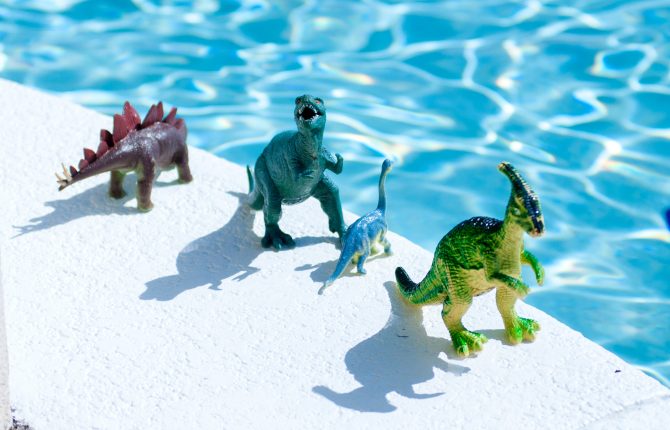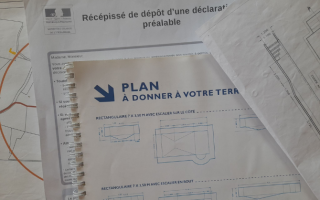Swimming Pool Safety in France

New laws are now in force
The recent changes to French Law mean that all privately owned swimming pools must now have a safety device in place that conforms to AFNOR Standards. The law is enforced by a fine of up to €45,000 and inspectors are checking swimming pools in all regions for the correct installation of alarms and barriers.
Extracts from Standard NF P90 306
These extracts are for your general information; they are not a definitive interpretation of the law and should not be regarded as such.
There are four types of approved security system:
1. Security Barriers, AFNOR standard: NF P 90-306.
These can be removable or permanent.
2. Pool Alarms, AFNOR standard: NF P 90-307.
Immersion detector or perimeter alarm. Use of this system requires that an adult be within audible range to be able to react to the alarm.
3. Pool Covers, AFNOR standard: NF P 90-308.
Winter covers are only accepted if they are AFNOR approved. Due to the recent nature of these standards, most covers older than 3 years old are not certified.
4. Pool Shelter (Abri), AFNOR standard: NF P 90-309.
Security Barriers
The CSC (Centre de Sécurité des Consommateurs) recommends the installation of a pool safety fence or a barrier, as it is the only passive security device. All the other approved means of security; alarms, rigid safety covers, shelters (abris) need to be actively turned on or physically closed every time the pool is vacated (even for a few minutes) and as such should be seen as supplementary to a physical barrier.
The standard NF P90 306 defines the requirements for the installation of pool safety fencing and the means of access to pools (partially or completely buried in the ground or above ground), which is intended to limit the access to swimming pools to children of less than five years old.
Definitions
Protection Barrier and means of access.
A material device conceived to be established around a swimming pool in order to prevent the access of children of less than five years to this swimming pool. The protection barrier can be combined with one (or more) walls of buildings, or dwellings, bordering the zone in which the swimming pool is located insofar as these walls do not allow an access to the swimming pool by their height or their own openings.
NOTE: a hedge alone is cannot be regarded as a protection barrier.
Family private swimming pool
Swimming pools reserved for the personal use of a family
Swimming pool of collective use – including Rental properties
Any swimming pools which are not for private family use is considered to be of public or collective use
NF P90 306 Specific Requirements
The protection barrier must be built in order to prevent the passage of children of less than five years old by striding over, climbing or accidental opening of the means of access. The protection barrier should not harm a child attempting to cross it; the risk of cuts and puncture wounds, or the means of access jamming, must be avoided. To allow older users to cross the barrier without risk, the protection barrier must comprise a means of access which cannot be opened by children of less than five years of age and must be without danger to all users, whether they are adults or children.
The minimal height of the barrier must be at least 1.1m. The minimal height between two fixing points must always be equal to or higher than 1,10 m.
Means of Access
The protection barriers must have a means of access to the pool area, which is childproof.
Pools for private family use
The access to the pool must be closed with locking latches (which require two simultaneous actions to open them or an automatic locking system.
Pools for collective use including rental properties
The access to the pool area must be by the use of a self-closing, self-locking gate. The gate must open outwards from the swimming pool. To prevent the accidental opening of the gate by a child of less than five years the unlocking system should necessitate a minimum force of 20N.
The unlocking system must be simple for an adult to operate.
Fixing to the ground
The method of fixing to the ground should ensure that the barrier is unable to move more than 10mm from the fixing post. The barriers should be installed a minimum of 1m from the water’s edge and not so far from the edge of the pool to render them ineffective.
The above is for your general information. It should not be used as a definitive interpretation of the law in any way. You should ensure that any security product you purchase for your swimming pool conforms to the AFNOR standards.
Removable Swimming Pool Fencing
Removable safety fencing can provide a practical and effective barrier against pool drowning without having to go as far as erecting a permanent rail fence. The concept is simple. Isolate the pool from your home and eliminate all access to the water by a toddler. For the pool to be truly isolated and the barriers serve effectively, there must not be a reason to open the pool fence other than to use or service the pool itself. The more times a fence is opened, for a reason other than to use the pool, the greater the possibility that it will be left open and expose children to risk. This type of fencing can be removed and stored quickly to enjoy the pool and it’s surroundings and then put back up very easily. Constructed of see through, polyester mesh mounted on aluminium or fibreglass support poles, the fence is placed into aluminium or plastic sleeves installed into the deck surface around the pool.
Please remember that these security systems are no substitute for the vigilance of a parent.
Share to: Facebook Twitter LinkedIn Email
More in centre, children, family, garden, legal, swimming pools, technology
Leave a reply
Your email address will not be published. Required fields are marked *



